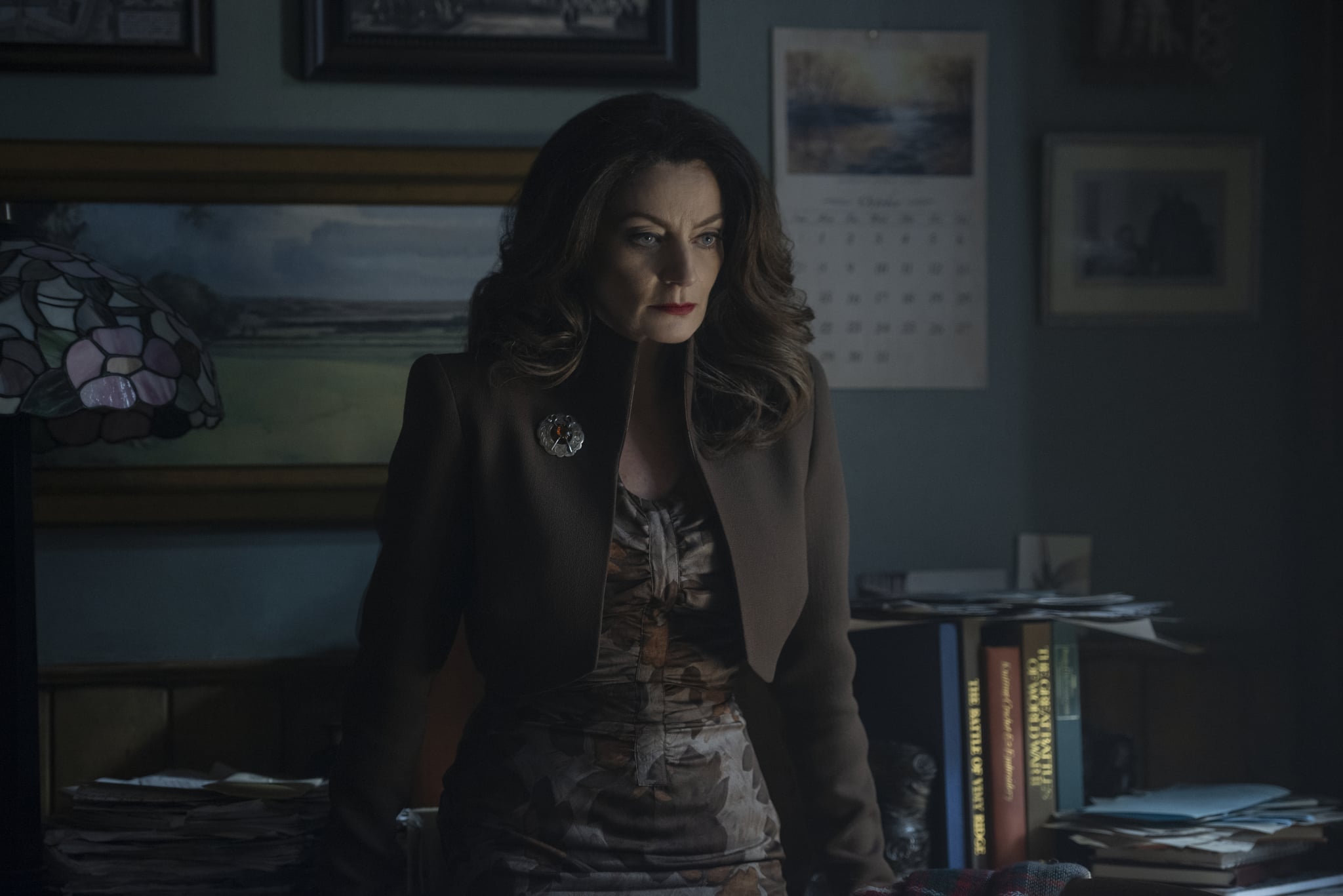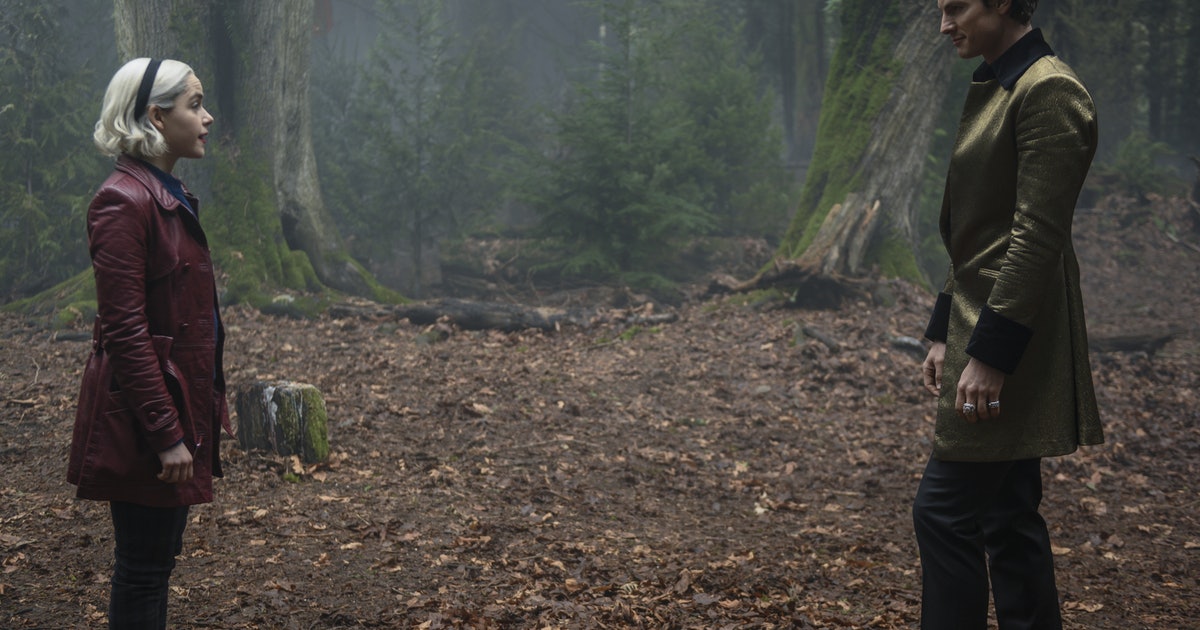Last October, Netflix dazzled the world with its incredibly dark adaptation that was The Chilling Adventures of Sabrina. Between the vivid Satanic imagery, edgy teen drama, and unflinching blood and violence, it was far cry from the sitcom of the 1990’s. So it was no surprise that it was renewed for a second season (as well as a third and fourth) less than a year later. But how does this hold up compared to the story that came before?

The Path of Night
Technically the next season began in December when Netflix dropped the 11th episode of Season 1, “A Midwinter’s Tale”. While it did feel a bit too much like a forced Christmas special, it did help continue the storyline following her signing the Book of the Beast. As the second season starts, Sabrina has taken an indefinite leave from Baxter High and her mortal life to fully devote herself to her magical practices, something she resisted for so long. While the first season dealt with her struggling to find herself among two worlds, it is fascinating to watch her realize her full potential here.
While Sabrina navigates the waters and discovers what she’s capable of, her mortal friends deal with their own struggles. Roz deals with going blind, while Theo (formerly Susie) tries out for the boys’ basketball team and comes to terms with his gender identity. Plus Harvey and Roz develop feelings for each other, but fear they might hurt Sabrina while doing so. Honestly, the only issue with these characters is that at times it feels like the series isn’t sure what to do with them. There’s even one point where they’re not seen or mentioned for a few episodes, and it’s not that noticeable.
A Mysterious Looming Force
The first season had a rather strong overarching narrative about Sabrina’s signing the infamous Book of the Beast. Most of the storylines and character motivations came from Sabrina’s reluctance, Blackwood’s forceful insistence, and Wardwell’s quiet manipulations. Everything that transpired seemed perfectly woven together in a tapestry of story with this plot point driving everything. While the second season is vastly more eventful and exciting on the surface, it felt rather lacking in this department.

We see Sabrina and her coven contend with witch hunters, a murder trial, conflicting ideologies for the Church of Night, misogyny, and even Satan himself. And while many of these events make for exciting episodes, they don’t flow quite as well as everything did in the last season. And it really boils down to the fact that all these events follow a “and then” pattern rather than a “because of” pattern. They all just sort of happen around each other, but there isn’t a strong sense of causation between them. It’s not necessarily a terrible thing, it just makes the story slightly less compelling. For example, the main plot involving Father Blackwood trying to usurp the Church itself in his image has absolutely nothing to do with the final storyline of the last two episodes.

A Bit Too CW in Tone (Minor Spoilers)
From the beginning, this series has praised itself for its darker and gritty approach to witchcraft and magic. It sought to be the moody teen drama akin to Vampire Diaries rather than a cheesy sitcom like its predecessor. And while the first season toed the line between it dark tone and cheesy teen drama, this season definitely follows the latter. The entire final climax involves the Dark Lord Lucifer himself coming to Earth in human form to initiate the Apocalypse. Naturally, this is very dark and exciting subject matter that would make for a very effective ending to a season. And one would think that for a character so iconic and formidable, Lucifer would be a threatening and intimidating presence.

Instead, he’s dressed like a second rate Hugh Hefner, and speaks with a soft-spoken British accent, acting more like a male model trying to look cool than the master of evil and ruler of hell itself. It’s quite clear that the series was more interested in having him be a brooding heartthrob, or at least what they thought would pass for one. Without getting too much into spoilers, the entire last episode is full of glamor in its production design and looks more like American Horror Story, and not in a good way. There’s an entire musical number with the song “Masquerade” from Phantom of the Opera that comes out of nowhere and doesn’t fit at all with the tone of the rest of the series.
It’s still very much an entertaining sequence of 9 episodes, and will make a worthwhile binging experience. The witch hunter story arc was a lot of fun, and they handle a subplot on gender identity with both care and subtly. But very much in TV fashion, it simply failed to live up to everything that made the first season so great. Of course, it was left open for a third season, and given some of the game changing events of the season finale, there’s definitely an interesting place to take the story from here. Hopefully the next chapter conjures up the same glory that the first season enjoyed!




